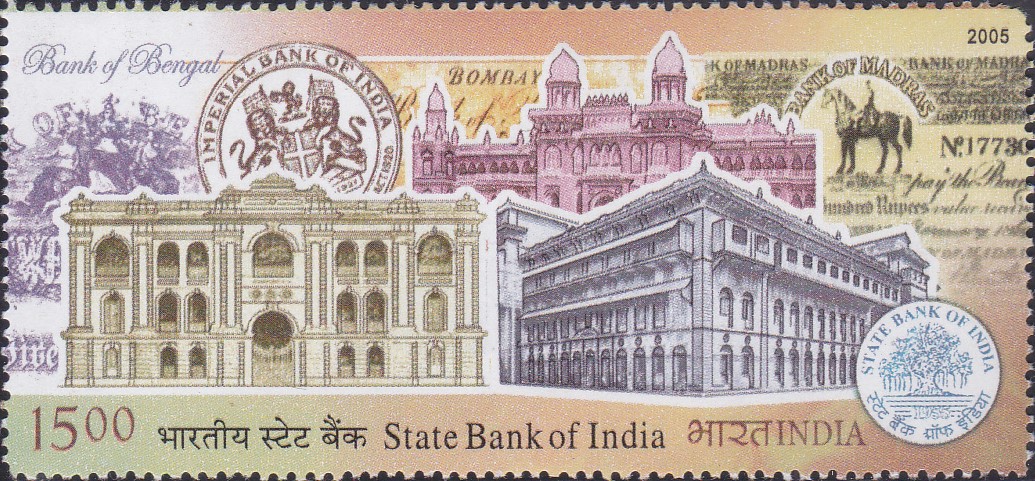
State Bank of India
A commemorative postage stamp on the 200 years of the State Bank of India (earlier known as Imperial Bank of India) :
 Issued by India
Issued by India
Issued on Aug 31, 2005
Issued for : The Department of Posts is happy to issue a commemorative postage stamp on the bicentennial year of the State Bank of India.
Credits :
Stamp & FDC : Sankha Samanta – On the basis of material supplied by the proponents.
Cancellation : Alka Sharma
Type : Stamp, Mint Condition
Colour : Multicolour
Denomination : 1500 Paise
Stamps Printed : 0.8 Million
Printing Process : Photogravure
Printer : India Security Press, Nashik
About :
- The State Bank of India, the premier banking institution of the country, has an unparalleled history spanning two centuries. The Bank through its several incarnations has played a pioneering role in the development of Indian banking, commerce, finance and industry. As the standard-bearer of Indian banking, the history of the State Bank of India encapsulates the economic history of India.
- It all began with the Bank of Calcutta on the 2nd June 1806, which was later renamed as the Bank of Bengal in 1809, becoming the first of the Presidency Banks under the East India Company. The Presidency Banks of Bombay and Madras were established in 1840 and 1843 respectively. These three Presidency Banks heralded the onset of modern banking in India. They continued to issue currency notes till 1862, when this function was taken over by the Government. From 1866 they were given formal central bank status till the creation of the Reserve Bank of India in 1935. Under the Imperial Bank of India Act, the three Presidency Bank were amalgamated in 1921 to form the Imperial Bank of India, which was nationalized on the 1st July 1955, resulting in the creation of the State Bank of India.
- The State Bank of India began with a mandate for rapid expansion and within 5 years of its creation, it doubled its network with the opening of 416 new branches. Through 14 Local Head Offices and only 50 Zonal Offices, the system functions in a decentralized manner. Today with over 9000 branches, the State Bank of India has retained dominance over the Indian banking horizon.
- In 1959 and 1960, the State Bank of India acquired eight banks, two of which were later merged into one. These seven Associate Banks today form an important part of the State Bank Group.
- 1980 onwards the State Bank of India has created subsidiary companies, which have undertaken Merchant Banking, Leasing, Mutual Funds, Home Finance, Gilts, Factoring, Life Insurance, Credit Cards, and Debit Cards etc. thus transforming itself into a financial service conglomerate. It also has over 50 Offices and several banking subsidiaries in foreign countries.
- The Bank has particularly been serving through its rural and semi-urban network, promoting agriculture and small-scale industries.
- The Bank has been actively participating in the employment generation and poverty alleviation schemes sponsored by the Government such as Swarnjayanti Gram Swarozgar Yojna, Prime Minister’s Rozgar Yojna, Swarnjayanti Shahari Rozgar Yojna, scheme for liberation and rehabilitation of scavengers etc.
- The Bank has been the convener of State Level Bankers’ Committee in eleven states and two union territories and is the lead bank in 190 districts, mostly in hilly and backward areas.
- The Bank is also focusing on core infrastructure sectors like power, telecom, petroleum, oil, gas, paperboards, hotels etc. The Bank is planning increased penetration in auto components, rice mills, brassware, agro pump sets, etc. In retail, the Bank is greatly focussed on contract farming. Customized products have been introduced for tourism.
- State Bank of India is the only Indian bank, to be among the top ten banks in the world. The State Bank of India and its predecessors have always effectively combined their roles as important instruments of public policy with their commercial status, competing successfully in the market and earning consistent profit throughout their existence. State Bank of India can truly represent the Indian economy in the global markets. Its activities not only touch everyone in India, but also lend strength to Indian economy on a global platform.
- Text : Based on material given by the proponents.


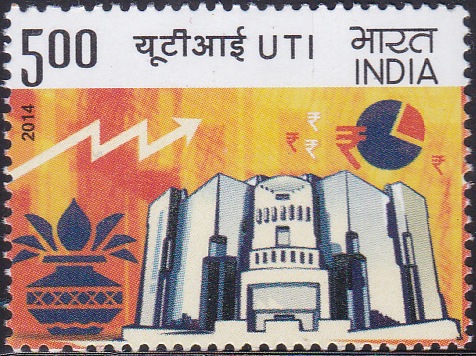

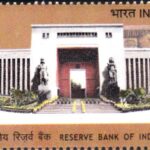
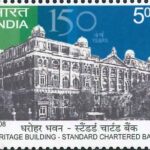
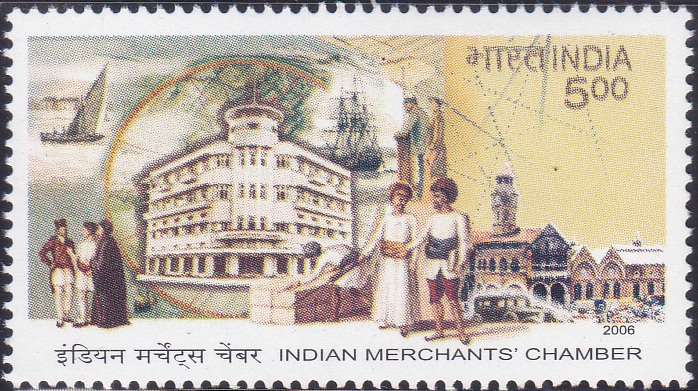
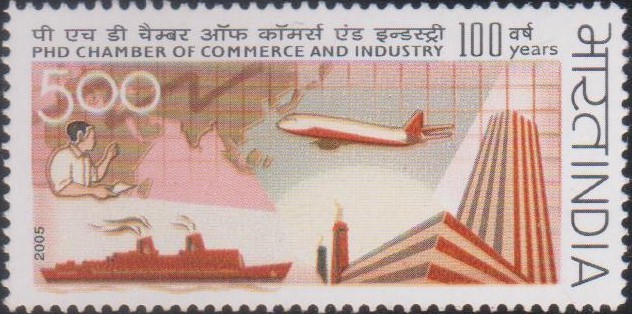
[…] State Bank of India and the post offices serve the movement in selling these securities to the public and render […]
[…] second branch is the UTI Mutual Fund, sponsored by State Bank of India, Punjab National Bank, Bank of Baroda and Life Insurance Corporation, with each of them […]
[…] of Calcutta (Kolkata) Corporation and in the same year he was nominated to the post of Director, State Bank of India. He was elected President, Alumni Association, National Council of Education, Bengal, Jadavpur […]